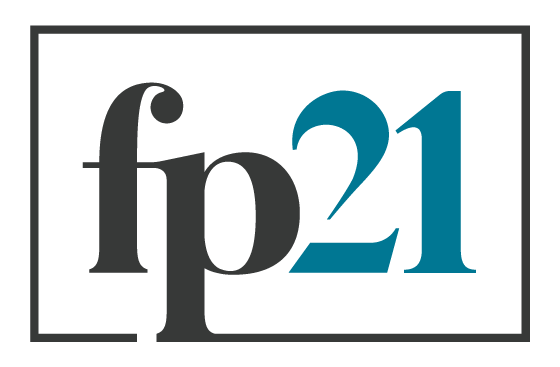State Department FFRDC: Public Comment for the Federal Register
By: Dan Spokojny | Aug 14, 2024
The May 17th announcement that the State Department will sponsor its first research and development center is “a huge win for diplomacy.” A Federally Funded Research and Development Center (FFRDC) for diplomacy is something that fp21 first proposed more than two years ago as a way to enhance foreign policy expertise.
The notice in the Federal Registrar invites public comment, so fp21 mobilized to respond and help nudge this proposal forward. On August 6, 2024, 75 diplomats, policymakers, academics, and think tank leaders gathered to brainstorm the new research center. This note summarizes the discussion. A handful of us, the undersigned participants, submitted the below text as a public comment.
Public Comment
Participants in an August 6 expert-led discussion relayed lessons from the Defense Department’s relationship with its many FFRDCs – an important source of best practices that should be studied for the State Department’s effort. We discussed how the Defense Department uses its FFRDCs to powerful effect. Standing outside of the normal bureaucratic turf battles, FFRDCs have been successful in bringing objective evidence to highly politicized questions such as evaluating expensive weapon system contracts, creating space to challenge assumptions, such as during debates over progress in the Vietnam War, and supporting policymakers to develop long-term strategic views on questions such as nuclear defense posture.
FFRDCs have also proven a smart business investment. When leveraged appropriately, FFRDCs can save more money than they cost by helping evaluate policy and avoid expensive mistakes.
Who Owns the Relationship?
The State Department’s updated federal notice about the FFRDC, posted on August 5, identifies three focus areas of research: Diplomatic Innovation and Modernization (DIM), Global CyberTech Solutions (GCS), and Global Operations and Acquisitions (GOA). The purpose of the DIM focus area is to strengthen global engagement and humanitarian outcomes by pioneering research and development initiatives that address emerging threats and foster international cooperation. GCS will focus on R&D in IT, cyber defense, systems engineering, and data analytics. GOA will center on acquisition methodologies and tools, and data assessments of broad scale Department needs, international cooperation, and innovative operational practices.
The updated federal notice indicates a shift in strategy for the FFRDC, collapsing these three lines of effort into a single contract rather than three separate Centers as originally suggested. This unfortunate change will make it harder for State to get the maximum benefit from the FFRDC. An FFRDC will be effective to the extent that it can build deep relationships and subject-matter expertise with the Department. No single organization currently owns expertise across these diverse issues. Constraining the FFRDC to a single entity may invite bureaucratic bloat and more generalist researchers. Three separate, smaller contracts (or some form of consortium) seems to be a wiser and more nimble approach that will benefit the State Department in the long run. An existing organization may still be able to demonstrate the ability to achieve an economy of scale to deliver expertise across multiple centers, but such a decision should be made through a competitive bidding process.
How the State Department chooses to manage its new FFRDC is an essential question. The FFRDC must report to an office (or offices) of significant stature and influence. Experience suggests that if its management is relegated to a backwater, the FFRDC’s research will not likely achieve much impact.
We believe the wisest approach would be to have each function led by a different office at the Department: the DIM function could be owned by a policy office at the State Department – perhaps Policy and Planning (S/P) or the Political Affairs undersecretariat (P), perhaps in coordination with the Public Diplomacy undersecretariat; GCS could be owned by State’s Information Technology Office (IRM), and; GOA could be owned by the Management undersecretariat (M). The decision about internal leadership should be made through a deliberative process rather than by fiat.
However, this distribution of responsibility raises the question of whether the three categories detailed above are the right ones. The three categories appear to be overlapping and confusing. The type of expertise necessary to research organizational modernization is vastly different from policy analysis, or cybersecurity, for instance. The categories should be harmonized with the portfolios of the offices that will manage the FFRDC lines of effort. We would consider organizing things differently.
The Department should consider simplifying to two distinct lines of effort, ideally supported by two separate FFRDC contracts: Policy Research, and Operations Research.
Policy Research would manage questions pertaining to substantive foreign policy challenges (e.g. researching best practices in the promotion of American businesses, or improving public diplomacy messaging regarding China) and the processes by which policy decisions are made (e.g. how to improve strategy processes, or research on how to improve the much-maligned clearance process). The policy work should be managed by an influential policymaking office such as S/P or P, and be closely tied in with externally focused career civil and foreign service officers, including those operating in the field. Policy-focused offices have little time for deep reflection and long-term thinking. Creating a mechanism for them to request unhurried consideration of vital national security issues would be a boon.
Operations Research, in contrast, would manage everything related to internal institutional questions, such as questions related to personnel, information technology and communications, acquisitions, and the like. It might be owned by the Under Secretary for Management, but also include significant input from the Director General.
For the FFRDC to be useful, it will have to build a lot of trust with the State Department. Access to timely, sensitive information will be essential to enable the quality of the FFRDC’s research. If the bureaus that own the relevant information and policy authority are not involved in crafting the research question, the findings will likely be misguided and ignored.
Enterprising leadership at State is going to have to help the FFRDC navigate this insular culture and build bridges between the world of research and practice. This will be a central task for external researchers at the FFRDC. But the opposite is true as well: for State to take full advantage of the FFRDC, it will need to develop a deeper understanding of research methods.
Who Decides the Research Questions?
Some FFRDCs managed by other agencies get to set their own research agendas, while others are tasked to take on specific questions from their host. The most effective model for the State Department would balance both of these approaches. Some independence should be granted for the FFRDC to take on big challenges that are not currently prioritized by leaders at the Department. But a mechanism should also be created for the FFRDC to solicit requests directly from their government agency and its staff.
In our expert discussion, experienced diplomats noted the necessity of the FFRDC to build relationships with career officials. Inviting research ideas and input from bureaus and embassies at the speartip of US foreign policy will be vital to ensure its relevance to the day-to-day conduct of diplomacy, and the effectiveness of any reforms. At the same time, the FFRDC’s research agenda should also be shaped by input from 7th-floor officials to ensure attention to big, cross-cutting challenges.
Funding will be a key question. If the budget is controlled by only a few officials at the State Department, the FFRDC’s research will almost certainly be more myopic. A diverse board of advisors should be composed to steer the research agenda and its resourcing. Such a board could ensure buy-in throughout the building, as well. Ideally, Congress will create a dedicated funding line for the FFRDC rather than force State’s offices to “pay-to-play,” which may inject corrosive incentives into the research process.
Participants in our discussion proposed several specific research topics that an FFRDC could take on: How to encourage foreign commercial interests to support US policy priorities; Evaluating the impact of US high-level diplomatic engagement; How to improve the clearance process; Best practices in the strategy, planning, and budgeting (that State currently seems to be so weak at), and; Improving the employee evaluation process.
One participant noted that the Department already has a set of excellent request questions in its Learning Agenda – as required by Congress – that it is struggling to execute. Another proposed the Department stand up a small team to support the crafting of sharp research proposals from throughout the building to facilitate improved research uptake by the FFRDC. Another suggested that the FFRDC’s research should be integrated with the Department’s strategic planning process to ensure alignment of research and policy goals. Others discussed the benefit of existing models to facilitate productive interactions between policymakers and academic researchers.
Concluding Thoughts
At a time when US foreign policy is facing a complex array of challenges, An FFRDC for diplomacy can be a powerful tool for improving foreign policy effectiveness. Yet, as with everything in government, success will lie in the quality of its implementation. We want to encourage an inclusive design and implementation process that draws on the expertise and insights from a broad range of actors: career diplomats, political leadership, academic experts, policy-focused experts, and managerial/administrative experts.
We commend the development of this proposal and look forward to supporting its success.
Signed,
Dan Spokojny, CEO, fp21
Thomas Scherer, Research Director, fp21
Jacob Shapiro, Professor of Politics and International Affairs, Director of the Empirical Studies of Conflict Project, Princeton University
Christopher Kojm, Professor of International Affairs Practice, Elliott School of International Affairs
Bruce Gregory, Visiting Scholar, Institute for Public Diplomacy and Global Communication, George Washington University
Drew Peterson, Adjunct Instructor at the Graduate School of Public and International Affairs, University of Pittsburgh


